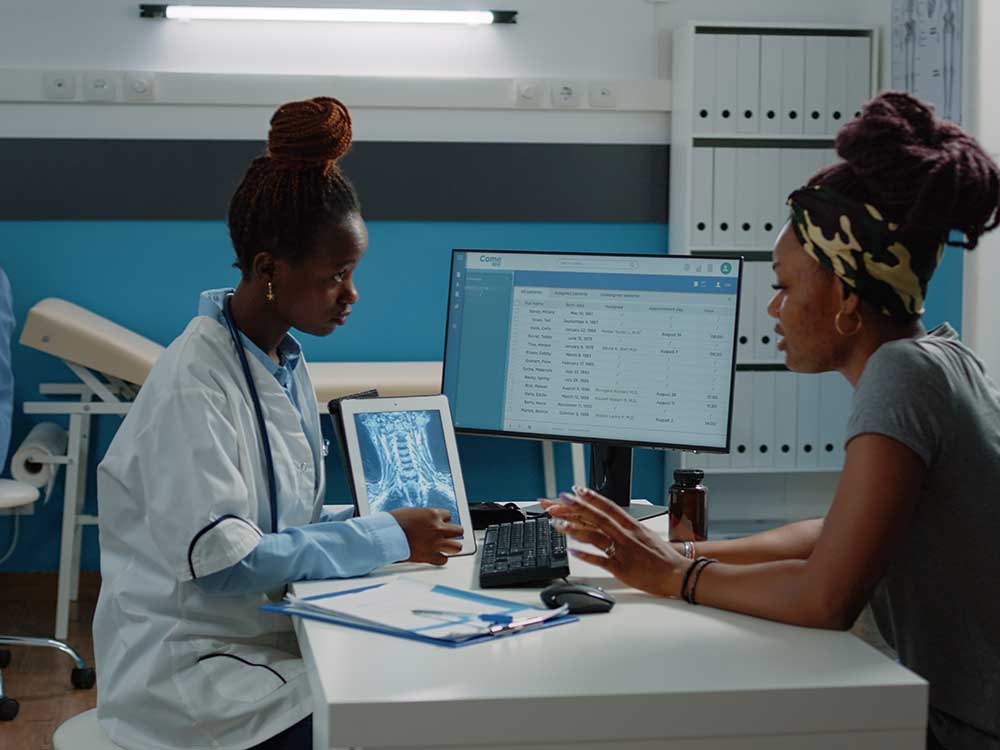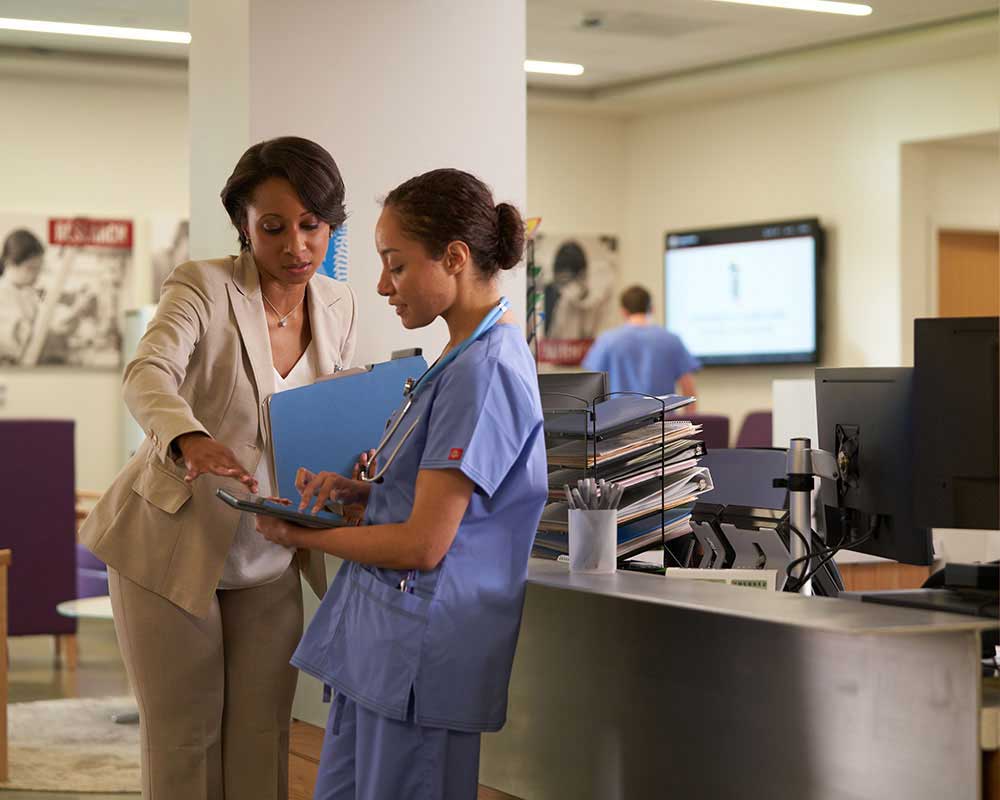A Total Overview to Medical Administration Certifications and Accreditations
A Total Overview to Medical Administration Certifications and Accreditations
Blog Article
Best Practices in Medical Administration for Improving Effectiveness and Lowering Expenses
In the ever-evolving landscape of health care, the pursuit of best techniques in medical management is extremely important for improving efficiency and suppressing costs. By integrating innovative innovations such as digital wellness documents and telemedicine, doctor can simplify operations and boost client care. Innovation alone is not a panacea; enhancing source allocation and cultivating collaborative interaction among treatment groups are similarly important. As companies strive to stabilize quality and expense, what strategies should be prioritized to attain these double objectives? The answers to these concerns hold the trick to a more sustainable medical care system.
Leveraging Advanced Modern Technology
In today's quickly evolving medical care landscape, leveraging sophisticated innovation is no longer optional yet vital for reliable medical management. The integration of electronic solutions right into medical care systems has transformed the way centers operate, enhancing processes and enhancing patient care. Electronic Health Records (EHRs) are pivotal, supplying comprehensive person information that can be accessed promptly by accredited employees, hence minimizing redundancy and decreasing mistakes. By systematizing individual info, EHRs get rid of the need for cumbersome paperwork and help with seamless communication among health care companies.
Telemedicine is one more technological innovation that has actually reinvented client interaction. It provides ease for both individuals and healthcare specialists by allowing remote assessments, which can lower the requirement for in-person visits and maximize appointment organizing. Additionally, telehealth systems can prolong medical care access to rural or underserved areas, linking gaps in treatment distribution.
Moreover, using Expert system (AI) and artificial intelligence is becoming progressively widespread in predictive analytics, permitting very early detection of possible health and wellness issues and more enlightened decision-making. These technologies, when integrated efficiently, can improve diagnostic precision and customize patient treatment strategies, inevitably resulting in boosted medical care outcomes and operational performance.
Optimizing Source Allocation
By tactically handling resources such as personnel, tools, and financial resources, health care centers can dramatically boost their functional performance, improve patient end results, and lower unneeded expenditures. The initial action in enhancing resource allocation entails performing a detailed assessment of current properties and recognizing areas where sources might be underutilized or overextended.
Focusing on resource allowance based on person needs and service needs is essential. Carrying out adaptable staffing designs can likewise maximize labor resources by changing personnel allotment in feedback to changing client quantities.
Economic resources must be meticulously kept track of and designated with tactical foresight to support both short-term functional requirements and lasting institutional goals. This consists of investing in training programs that improve staff proficiencies and embracing energy-efficient techniques that lower operational costs (medical administration). Ultimately, an optimized resource allotment method cultivates a lasting medical care setting that is receptive, reliable, and monetarily prudent
Streamlining Workflow Processes
When healthcare facilities aim to improve Resources operational efficiency, improving process processes ends up being a critical focus. Efficient workflows minimize redundancy, eliminate unnecessary steps, and enhance control amongst health care experts. This method not only accelerates service delivery yet additionally improves the high quality of client care.

Following, innovation assimilation plays a considerable duty in enhancing workflows. Carrying out digital health documents (EHRs) and digital physician order entrance (CPOE) systems lowers paperwork, reduces human mistake, and ensures information comes to all relevant personnel. Furthermore, leveraging telemedicine systems can streamline patient appointments and follow-ups, minimizing the strain on physical facilities.

Eventually, structured process result in cost decreases and boosted person satisfaction, fostering a more lasting medical care setting.
Enhancing Information Administration
Structure upon structured process, enhancing data management becomes an essential part beforehand health care management. Reliable information administration systems are important for why not look here maintaining accurate person records, improving decision-making, and ensuring conformity with regulative criteria. By applying durable data monitoring options, health care facilities can boost the quality of client care while at the same time decreasing functional expenses.
One key element of enhancing information management is the assimilation of advanced electronic health and wellness record (EHR) systems. These systems promote the seamless exchange of person info throughout various divisions, minimizing duplication of examinations and minimizing mistakes. A well-designed EHR system sustains information analytics, making it possible for doctor to identify patterns and make educated decisions pertaining to individual treatment.
In addition, safeguarding person information is vital. Taking on extensive cybersecurity procedures, consisting of file encryption and routine audits, ensures the stability and privacy of sensitive info. This not just secures clients however likewise maintains the establishment's online reputation.
Buying personnel training is one more critical factor. Informing medical care professionals on information monitoring methods enhances their capacity to properly use technology, resulting in improved patient results. In conclusion, boosting information monitoring via advanced technology and comprehensive training is important for attaining performance and expense reduction in clinical administration.
Fostering Collaborative Communication
A crucial component ahead of time medical administration is fostering collaborative communication amongst medical care specialists. Efficient interaction is vital for making sure smooth individual care, optimizing treatment results, and lessening errors. By motivating open dialogue and coordination throughout multidisciplinary groups, health care organizations can boost their operational efficiency and lower unneeded expenses.
Central to this approach is the integration of interaction innovations such as electronic wellness documents (EHRs) and safe messaging platforms, which assist in the quick exchange of critical individual information. These devices allow health care companies to accessibility and share information in actual time, ensuring that all group participants are informed and lined up in their decision-making processes. Moreover, normal team meetings and interdisciplinary rounds can better promote a society of partnership and accountability.
Training programs focused on enhancing interaction abilities are additionally crucial. Ultimately, promoting collective communication leads to enhanced health care web link shipment and price savings.

Conclusion
Integrating advanced technology, such as electronic health records and telemedicine, alongside optimized resource allotment and streamlined workflow processes, is vital for boosting performance in clinical management. Efficient data administration and fostering collaborative communication amongst medical care groups are vital for decreasing redundancies and boosting treatment high quality. By prioritizing preventive treatment and involving in high quality enhancement efforts, healthcare companies can attain substantial expense savings and boosted person results, thus ensuring sustainable healthcare shipment in a progressively complex setting.
Report this page